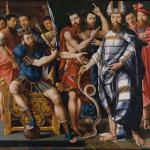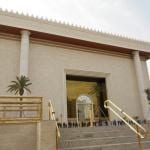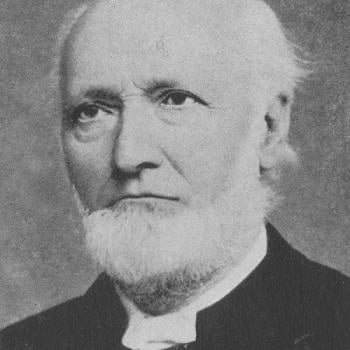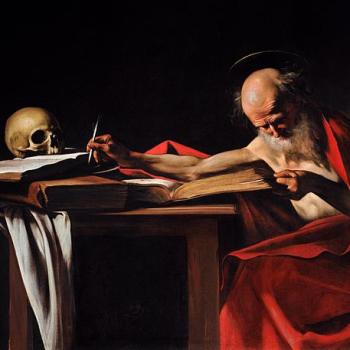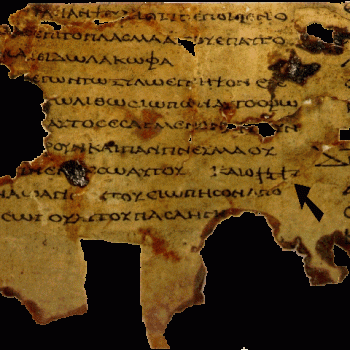vs. Dr. Steven DiMattei
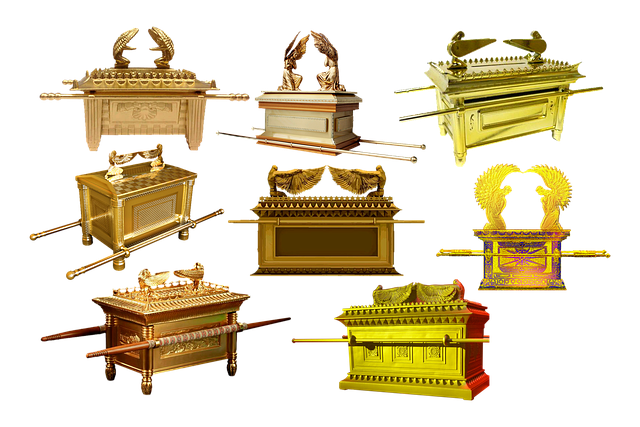
Dr. Steven DiMattei is a biblical scholar and author, formally trained in the New Testament and early Christianity, with M.A degrees in Classics and Comparative Literature as well. Rumor has it that he is an atheist, but I haven’t been able to confirm that on his site. He put up a website called Contradictions in the Bible. It seems inactive now (or he has lost interest or moved onto other things: who knows?), but the themes are things I really enjoy discussing and debating, and his articles are still online for all to see; thus fair game for critique — and stimulating food for thought, too. There is almost nothing I like to discuss and think about more than the interpretation of the Bible. Steven wrote in a post dated 5-7-16:
One of my reasons in choosing the word “defend” to describe my aims as a biblical scholar and author was in part to attract Christian apologists to my work and hopefully to get them to read these ancient texts on their terms and from within their own cultural contexts and to create a conversation around the biblical texts, their authors, and their competing beliefs, messages, worldviews, theologies, etc. As you can imagine this has proven quite difficult, nay impossible. Many Christian apologists and fundamentalists just cannot read, or simply identify, the text on its own terms separate from the beliefs and assumptions about the text handed-down through this collection of ancient literature’s title, “the Holy Book.”
Here I am: an apologist quite willing to engage in conversation. It takes two. So we’ll see if Steven is willing to follow through on his stated desire. I have had my own long history (in almost 40 years of apologetics) of “difficult, nay impossible” attempts to discuss matters with many people who tend to be of a few particular belief-systems, though I have no problem talking with anyone who is civil and can stick to a topic. I don’t just say this, I have a demonstrable record of doing it, which is evident on my blog, with its 1000+ dialogues. But as I said, dialogue takes two, and I would add that it also requires a degree of at least minimal mutual respect. Steven’s words will be in blue.
*****
I am critiquing two related articles of his, on alleged “biblical contradictions”:
#159. The Golden Calf OR the Golden Cherubs? (Ex 32:4 vs Ex 25:18-20, 37:7-9)
I shall deal with #159 first, because its errors are more basic, groundless, and indefensible.
What is the difference between these golden cherubs and the golden calf? Why is it permitted to fabricate golden cherubs and not the golden calf?
Short answer: because one was intended to be gross idolatry (the calf) and the other was a permitted non-idolatrous religious image, sanctioned by God. I have written about the details of the outrageous and blasphemous idolatry of the golden calf and the nature of idolatry as the Bible defines it:
Is the Mass Equivalent to OT Golden Calf Worship? [1996]
Biblical Idolatry: Authentic & Counterfeit Conceptions [2015]
On the other hand, there are many examples of permitted images in Old Testament worship, including the temple and ark of the covenant (in other words, not all images were forbidden “graven images” or idolatrous):
Veneration of Images, Iconoclasm, and Idolatry (An Exposition) [11-15-02]
Bible on Holy Places & Things [1-8-08]
Bible on Physical Objects as Aids in Worship [4-7-09]
Biblical Evidence for Worship of God Via an Image [6-24-11]
The Bronze Serpent: Example of Proper Use of Images [Feb. 2012]
“Graven Images”: Unbiblical Iconoclasm (vs. John Calvin) [Oct. 2012]
Worshiping God Through Images is Entirely Biblical [National Catholic Register, 12-23-16]
Statues in Relation to Bowing, Prayer, & Worship in Scripture [12-26-17]
Biblical Evidence for Veneration of Saints and Images [National Catholic Register, 10-23-18]
Crucifixes & Worship Images: “New” (?) Biblical Arguments [1-18-20]
Is Worship of God Through an Image Biblical? (vs. Luke Wayne) [11-10-20]
The ark of the covenant, which included the two golden cherubim on top, was never intended to be a representation of God. One can search the Bible in vain and never find the slightest hint of any such thing. God gave elaborate instructions for the construction of the ark and its use. I recently engaged an anti-Catholic Protestant who correctly noted that these two cherubim were not to be worshiped, but that God appeared in the space between the two of them (as the Bible states several times). But there was a permitted image involved (a cloud), as I detailed:
Luke makes a clever and interesting argument that the space between the mercy seat on top of the ark of the covenant, where God says He is present and to be worshiped (despite being surrounded by carved cherubim [angels]) is “empty space” and “imageless space” and “with no image.” But this is untrue, as the Bible informs us:
Leviticus 16:2 and the LORD said to Moses, “Tell Aaron your brother not to come at all times into the holy place within the veil, before the mercy seat which is upon the ark, lest he die; for I will appear in the cloud upon the mercy seat.
This cloud was visible, just as in other passages above, like Exodus 13:21; 19:18; 24:16; 33:10 (“the people saw the pillar of cloud”), and others like Numbers 16:42 (“the cloud covered it, and the glory of the LORD appeared“) and Deuteronomy 31:15 (“And the LORD appeared in the tent in a pillar of cloud“). The very word “appear” in Leviticus 16:2 and the last two passages also proves it. God doesn’t just say that He will be “present”, but that He will “appear” in this cloud.
The Bible draws a big distinction between a permitted, non-idolatrous image and idolatrous images deliberately intended to be idols.
Aren’t they both idols? Furthermore, why would Yahweh’s most Holy of Holies contain two golden cherubs? Were these representations of the god? Was the golden calf a representation of the god?
These are remarkable questions: asked by one who is highly educated in Bible study. It’s amazing to have to answer such questions at all. But here I go. I dealt with the golden calf in depth 24 years ago. Here are some highlights:
*****
In Exodus 32:1, the NRSV reads, “Come, make gods for us, who shall go before us……” (cf. 32:23)
Exodus 32:4-5 informs us:
- He took the gold from them, formed it in a mold, and cast an image of a calf; and they said, “These are your gods, O Israel, who brought you up out of the land of Egypt!” When Aaron saw this, he built an altar before it; and Aaron made proclamation and said, “tomorrow shall be a festival to the LORD.”
It is, therefore, clear that this is idolatry and otherwise sinful, on many counts:
1) It represents not even the one God, but “gods,” so that it falls under the absolute prohibition of polytheism which was known to any observant Hebrew (see, e.g., Ps 106:19-23; cf. Hab 2:18).
2) Nowhere are the Jews permitted to build a calf as an “image” of God. This was an outright violation of the injunctions against “molten images” (Ex 34:17; Lev 19:4; Num 33:52; Dt 27:15: all condemn such idols, using the same Hebrew word which appears in Ex 32:4, 8, 17: massekah).
3) Aaron built an altar before what the people regarded as “gods,” thus blaspheming the true God.
4) Lies were told and believed about “gods,” not God, liberating the Hebrews from Egyptian slavery.
6) NASB and NKJV read “god” at Ex 32:4 (not even capitalized), so that is clearly not intended as a reference to the one true God, YHWH, according to the accepted practice of all Bible translations. NRSV, KJV, RSV, NIV, NEB, & REB have “gods.” In either case, the view is not monotheistic, nor is it at all analogous to the belief and practice of those Christians who accept the Real Presence.
[as to even the early portions of the Bible (and all portions) being monotheistic, see:
Seidensticker Folly #19: Torah & OT Teach Polytheism? [9-18-18]
Seidensticker Folly #20: An Evolving God in the OT? [9-18-18]
Loftus Atheist Error #8: Ancient Jews, “Body” of God, & Polytheism [9-10-19]
Do the OT & NT Teach Polytheism or Henotheism? [7-1-20]
The Bible Teaches That Other “Gods” are Imaginary [National Catholic Register, 7-10-20] ]
Exodus 32:1 (cf. 32:23),. . . is revealing as to the state of mind of these idolaters. They ask Aaron to “make” them “gods.” Obviously, they could not have YHVH in mind at that point, since I imagine they at least knew that He is not “made by hands” and is eternal. Then they say these gods “shall go before us.” In my opinion, , the most straightforward interpretation of that is the golden calf being carried before them. How could they think (even in their debased state of mind) that YHVH Himself could be compelled to “go before them?” Therefore, they must have regarded the calf as a pure idol of their own making, not as a mere representation of the true God, because these contextual verses make clear that they didn’t have YHVH in mind.
If the above data isn’t sufficient, surely Psalm 106:19-21 nails down my case (NRSV):
- They made a calf at Horeb and worshiped a cast image. They exchanged the glory of God for the image of an ox that eats grass. They forgot God, their Savior, who had done great things in Egypt.
*****
If the biblical writers regarded the golden calf as an idol and condemned propitiating it or any image, then why is not the same upheld for these golden cherubs?
See the above. Short answer: the cherubim were never conceived as representative of God (or even “gods”), let alone worshiped as such. God said that He appeared between their wings, in a cloud. The golden calf, on the other hand, clearly was conceived as, and worshiped as an idol, in place of the true God.
Steven attempts to argue that Jeroboam’s similar idolatry could be seen as some kind of permissible worship by ancient Hebraic standards (partly derived from practices of surrounding or prior cultures):
It is quite possible that the calf altars that Jeroboam constructed, of which the golden calf story is a parody (#157), were throne seats as well. There is ample evidence from the ancient Near East of deities seated upon bulls. Scholars have certainly started to envision Jeroboam’s calf altars as just that—not representations of Yahweh, but his thrones. In this case, the calf-altar cult of the north rivaled the southern temple in Jerusalem. The depiction of the golden calf as an idol, or as gods, was part and parcel to the propaganda and polemic of the pro-Jerusalemite scribes who wrote it. In the end, however, these cultic symbols were no different than the cherubim that stood in the Holy of Holies and also served to represent the deities presence.
This is all arbitrary speculation, of course (as is much of documentary theory, which has long since been discredited). The actual biblical texts show quite otherwise. Ahijah spoke the word of the Lord concerning Jeroboam’s sin:
1 Kings 14:9 (RSV) . . . you have done evil above all that were before you and have gone and made for yourself other gods, and molten images, provoking me to anger, and have cast me behind your back.
Also:
1 Kings 12:28, 32 So the king took counsel, and made two calves of gold. And he said to the people, “You have gone up to Jerusalem long enough. Behold your gods, O Israel, who brought you up out of the land of Egypt.” . . .
. . . and he offered sacrifices upon the altar; so he did in Bethel, sacrificing to the calves that he had made.
Note: this is not intending “Yahweh to be worshiped through” the graven images, as you claim, but rather (according to God Himself, Who knows all things) “other gods.” Jeroboam himself refers to “gods”: a rank polytheism and idolatry indeed. We know that he sacrificed to these stupid molten images. It couldn’t be more clear than it is.
The New Bible Dictionary (edited by J. D. Douglas, 1962), in its article on Jeroboam, noted:
They threatened true religion by encouraging a syncretism of Yahweh worship with the fertility cult of Baal and thus drew a prophetic rebuke. (p. 614)
Likewise, in its article on “Idolatry”:
[I]t is a most significant thing that when Israel turned to idolatry it was always necessary to borrow the outward trappings from the pagan environment . . . The golden calves made by Jeroboam (1 Ki 12:28) were well-known Canaanite symbols, and in the same way, whenever the kings of Israel and Judah lapsed into idolatry, it was by means of borrowing and syncretism. (p. 552)
Albright, in his discussion of the bulls of Jeroboam, noted:
So Jeroboam may well have been harking back to early Israelite traditional practice when he made the “golden calves.” It is hardly necessary to point out that it was a dangerous revival, since the taurine associations of Baal, lord of heaven, were too closely bound up with the fertility cult in its more insidious aspects to be safe. The cherubim, being mythical animals, served to enhance the majesty of Yahweh, “who rides on a cherub” (II Sam. 22:11) or “who thrones on the cherubim” (II Kings 19:15, etc.), but the young bulls of Bethel and Dan could only debase His cult. (From the Stone Age to Christianity, 2nd edition, Garden City, New York: Doubleday Anchor, 1957, 301)
The brilliant biblical scholar F. F. Bruce draws a similar comparison and contrast:
It may be asked whether there was any difference in principle between the use of bull-calf images to support Yahweh’s invisible presence and the use of cherubs for the same purpose in the holy of holies at Jerusalem. The answer probably is that the cherubs were symbolical beings (representing originally the storm-winds) and their images were therefore not “any likeness of anything that is in heaven above, or that is in the earth beneath, or that is in the water under the earth” [note: Ex. 20:4; Deut. 5:8], whereas the bull-calf images were all too closely associated with Canaanite fertility ritual. It appears from the ritual texts of Ugarit that El, the supreme God of the Canaanite pantheon, was on occasion actually hypostatized as a bull (shor), and known as Shor-El. (Israel and the Nations, Grand Rapids, Michigan: Eerdmans, 1963; reprinted 1981, 40-41)
I move on now to Steven’s paper alleging a “biblical contradiction” #157:
[T]he people clamor for gods who “will go in front of us” since Moses has apparently disappeared. Aaron abides by their wishes, and melting the peoples’ gold jewelry down he “fashioned it with a stylus and made a molten calf,” and then proclaimed: “these are your gods Israel, who brought you up from the land of Egypt.” As our first textual anomaly, we notice that one calf is made, yet the text proclaims “gods” in the plural. Why?
Now Steven is making the orthodox Christian argument for us. Thanks!
Second, and largely illogical in the larger narrative context, merely days after the Horeb revelation, the giving and acceptance of the laws by the people, one of which stipulated no images, and apparently only a short time after witnessing Yahweh’s “signs and wonders” in his destruction of Egypt, their land, livestock, plants, and all firstborns, and the parting of the sea of Reeds, it is these new gods who are proclaimed as the gods “who brought you out of Egypt.” There is much that initially does not make any sense here.
Idolatry and rebellion against God never does: yet it is the constant, continual pattern of the Old Testament.
Lastly, Aaron builds an altar before the molten image and proclaims “a festival to Yahweh tomorrow!” And then we’re told that “they got up early the next day and made burnt offerings and brought over peace offerings”—that is, common sacrificial offerings to Yahweh. So, what or who exactly is being celebrated: Yahweh, the golden calf, or the “gods” who apparently brought Israel out of Egypt? Additionally, what is the relationship, that the text firmly implies, between Yahweh, the Golden Calf, and the “gods” of which it speaks?
It was an heretical mixture of orthodox and heterodox elements (as heretical departures invariably are). Aaron refers to “gods” as supposedly the ones who liberated the Hebrews from Egyptian slavery, builds an altar to the calf who represents them, then speaks of a “festival to the LORD” (Yahweh): Exodus 32:4-5. It’s classic heterodox syncretism: that Judaism and Christianity have been “blessed” with since time immemorial.
Even more puzzling, this all occurs right on the heels of the Exodus, the miraculous crossing of the Red sea, the witnessing of Yahweh’s ten terrifying signs and wonders by which means he destroyed Egypt and redeemed the children of Israel. The story of the Golden Calf makes no sense within this literary context. Even granting the people’s inclination, if you like, toward disobedience, it still makes no sense following the array of Yahweh’s awesome signs, wonders, miracles, and theophany, as well as their own verbally expressed consent to be Yahweh’s people and uphold his covenant. Like so many of the murmuring stories in Exodus and Numbers, the stories have little historical semblance and make no sense in their literary contexts . . .
Again, rebellion and heterodoxy never do make any sense; and they don’t because they aren’t rational to begin with, and originate in grace-deprived hearts filled with disbelief, lack of faith in and gratefulness to God, and rebellion. Steven doesn’t get it because he himself suffers from the acceptance of scores of false presuppositions and false conclusions drawn from same.
Rather, the Golden Calf episode was written as an independent story with a specific message to a specific audience. It was later inserted, rather poorly it must be said, into its current literary context in Exodus.
Faced with this evidence of irrational behavior of the ancient Jews, Steven does what all biblical skeptics do: he starts to construct imaginary interpolations into the text, from different writers in different times. There’s no proof (I dare bring up!) of any such thing. It’s all completely arbitrary speculation.
So what is the purpose and message of the Golden Calf narrative?
Don’t forsake the true God with blasphemous and downright silly and foolish idolatrous beliefs and practices . . .
Here is an example of the ridiculous speculation that adherents of the documentary theory habitually make:
The statement in 1 Kings 12:28 is claimed to have been said by Jeroboam I, the northern kingdom’s first king after its secession from Solomon’s tyranny. It must also be borne in mind that this is what the author, most likely the pro-Solomonic southern Deuteronomist, says Jeroboam says. It’s certainly a discriminating remark, and was used despairingly to depict Jeroboam as an apostate. This was, no doubt, the Deuteronomist’s intention.
Note that (as always), he attempts to provide no actual evidence or proof of these contentions. None is needed in this mindset. Baseless speculation reigns supreme!
Both the Golden Calf incident as well as the Deuteronomist’s account portray Jeroboam and his Aaronide lead cult as apostates.
Perhaps (I merely suggest) this is because (duh!) they actually were that!
The only question remaining is: why is Aaron depicted as the one leading the Israelites into sin?
Maybe — just maybe — because he actually did?!
This is a perfect example of how ancient scribes wrote archaized stories as polemical attacks on contemporary rivals.
And how does one prove such a thing in biblical particulars? We hardly if ever see such explanations in the skeptical / atheist anti-biblical polemical narrative fictions.
***
Photo credit: BrunoMarquesDesigner (5-15-20) [Pixabay / Pixabay License]
***


